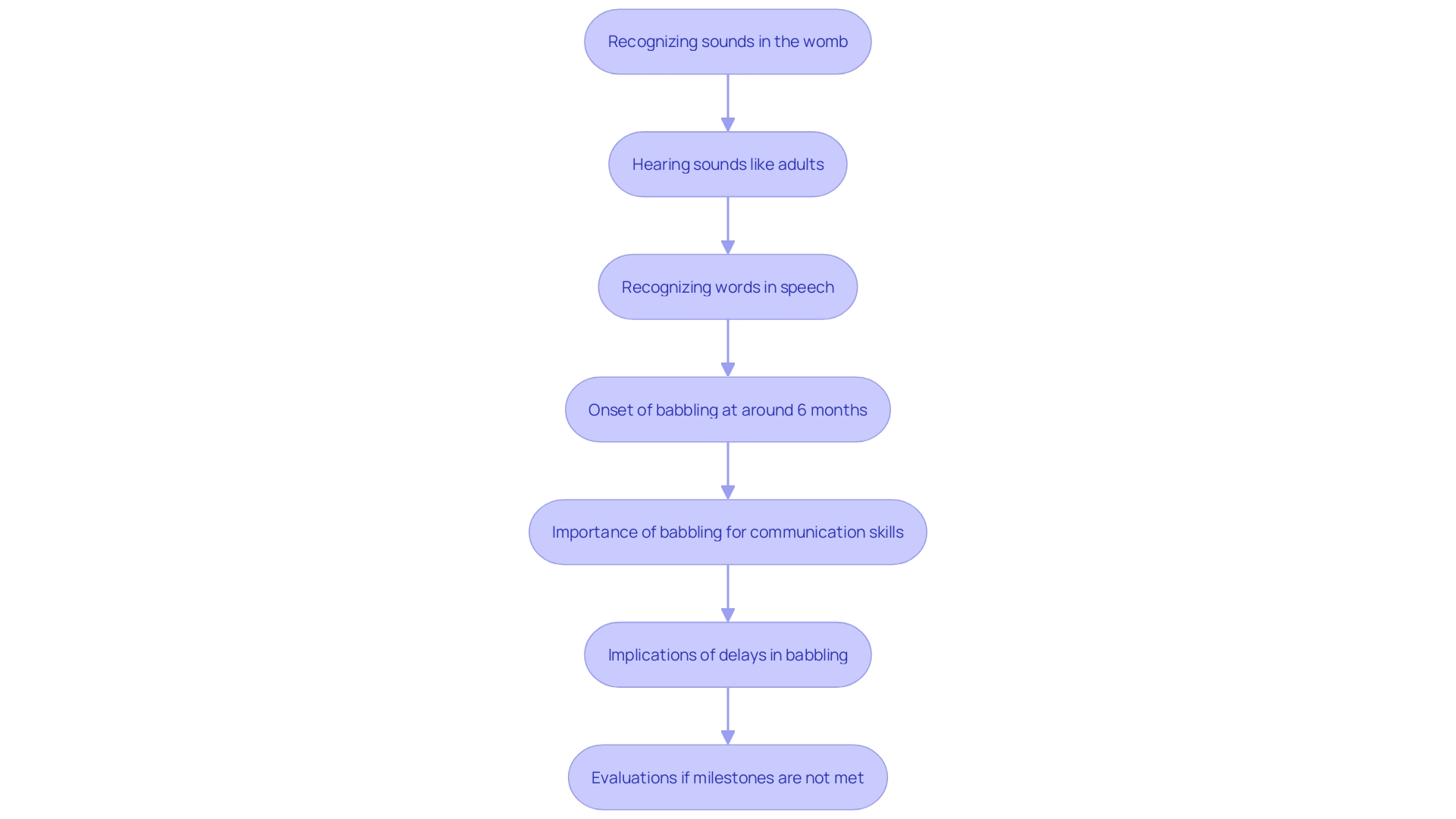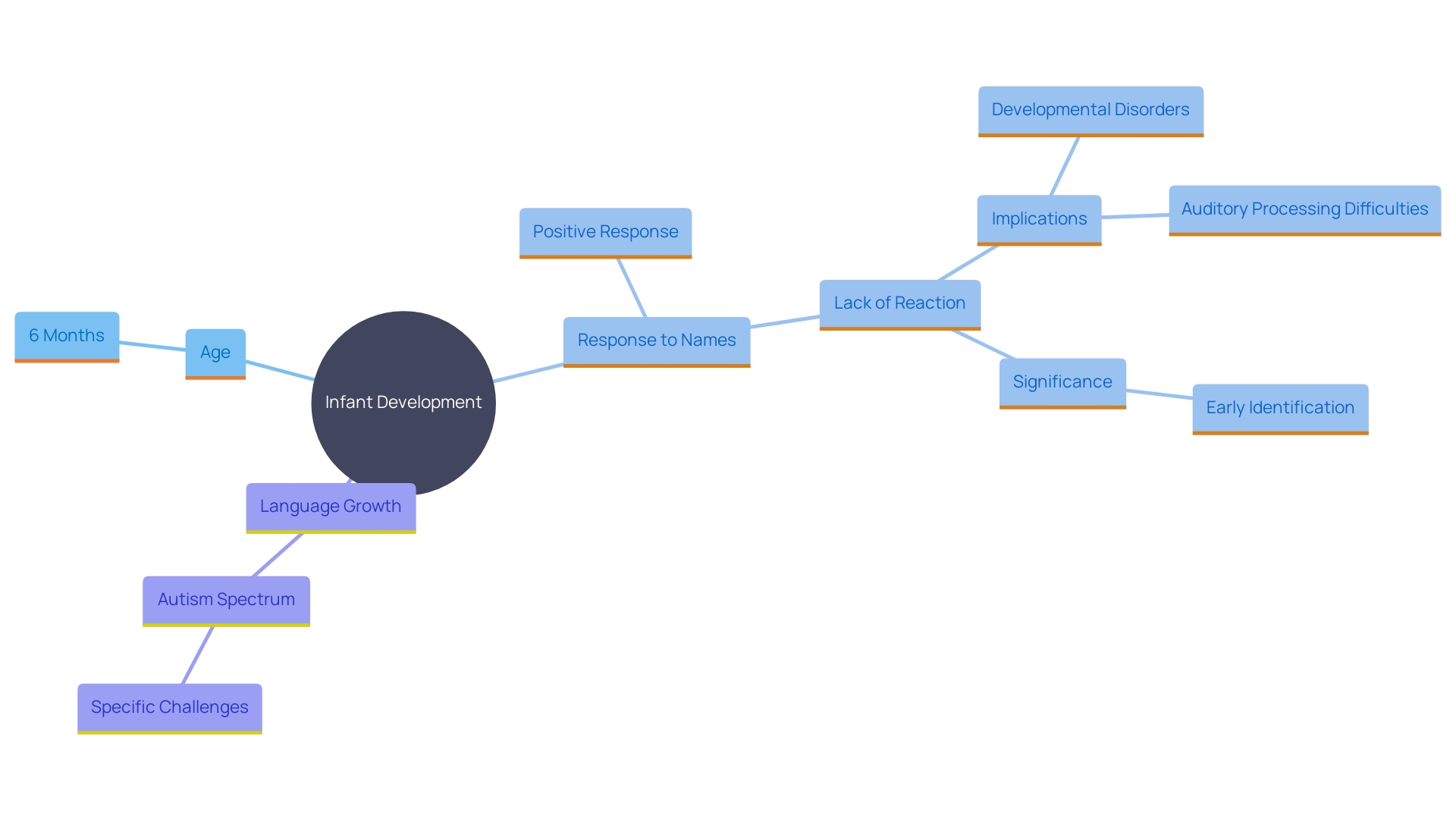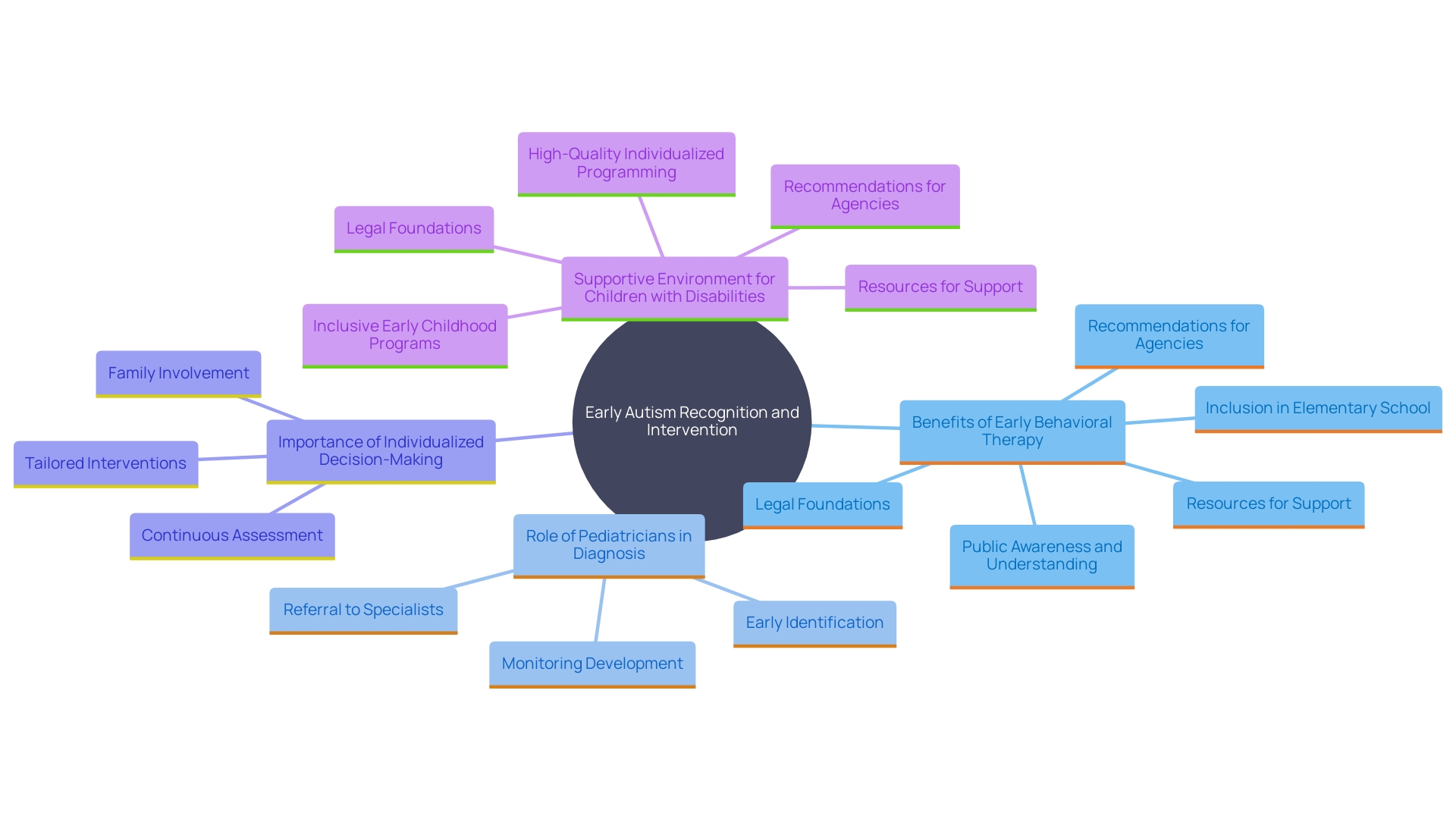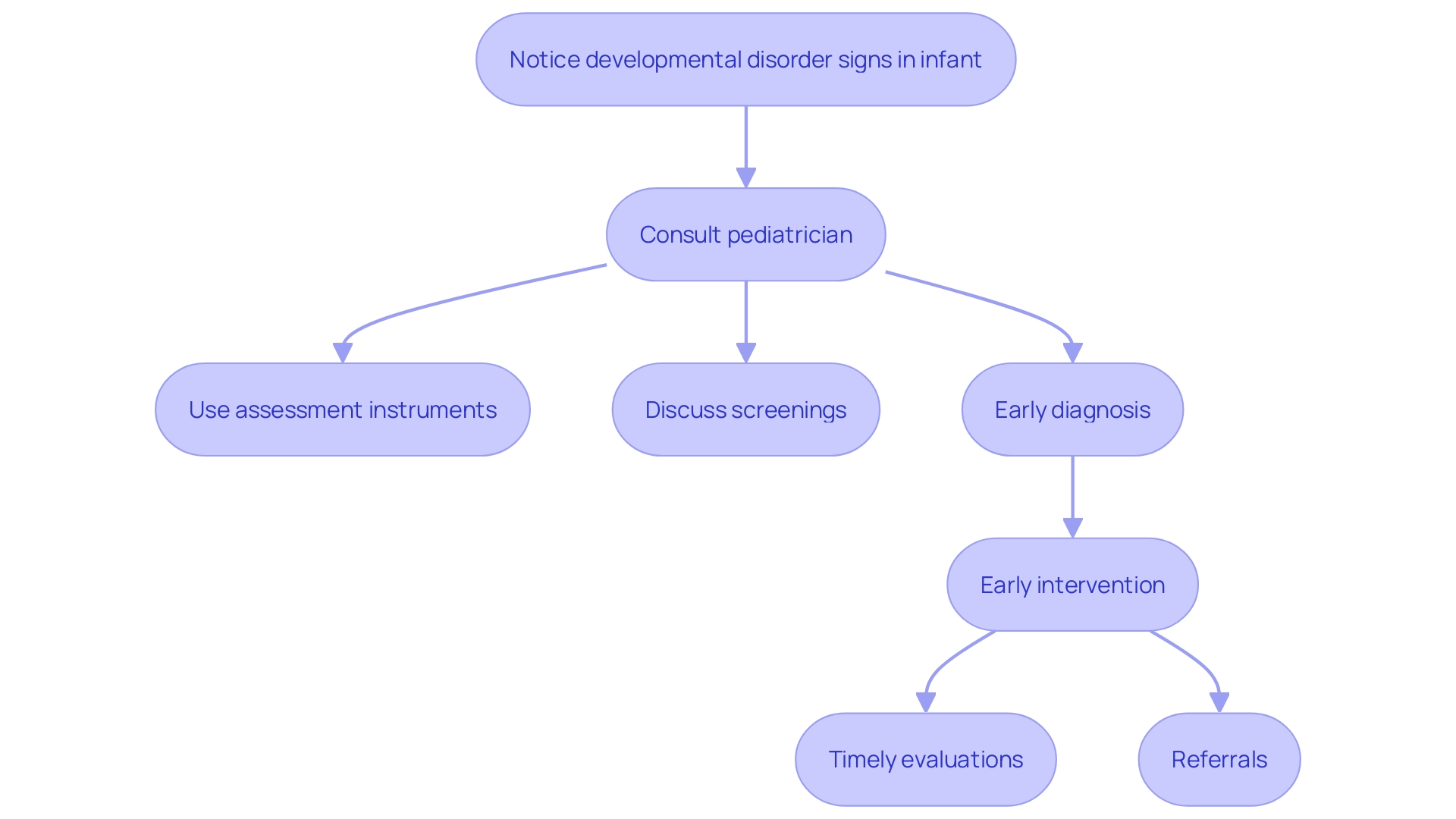Introduction
Autism Spectrum Disorder (ASD) is a multifaceted developmental condition characterized by enduring differences in communication, social interaction, and behavior. The term "spectrum" reflects the broad range of symptoms and severities experienced by individuals with autism. Affecting approximately 1 in 36 people, ASD highlights the critical need for awareness and early diagnosis.
Despite misconceptions, autism is not caused by vaccines, parenting styles, or nutrition, but rather is linked to genetic and neurological factors. Early identification of autism, particularly in infants, is essential for accessing necessary resources and support, which significantly enhances developmental outcomes. This article delves into the key indicators of autism in babies as young as six months, such as limited eye contact, absence of joint attention, delayed babbling, and lack of response to name.
It emphasizes the importance of early detection and intervention, and provides guidance on consulting pediatricians and utilizing screening tools to ensure timely and effective support for children with autism.
Understanding Autism Spectrum Disorder
Autism Spectrum Disorder (ASD) is a complex developmental condition marked by persistent differences in communication, social interaction, and behavior. These characteristics can vary widely among individuals, leading to the term “spectrum” to signify the range of presentations and severities. According to the CDC, this condition impacts roughly 1 in 36 individuals, highlighting the significance of awareness and early diagnosis.
ASD is not caused by vaccines, parenting styles, or nutrition; rather, it is believed to stem from genetic and neurological differences. Brain scans have revealed distinct variations in the brain structures of autistic individuals compared to neurotypical individuals. Despite ongoing research, the exact causes of the condition remain unknown, though a combination of genetic and environmental factors is suspected.
Diagnosis of autism relies on behavioral observations rather than medical tests. Clinicians utilize the DSM-5 criteria, which highlight the existence of fundamental characteristics such as challenges in interpersonal communication and interaction, along with restricted and repetitive behaviors. 'These features must be evident from childhood, even if some symptoms become more noticeable only when social demands increase or learned coping strategies no longer suffice.'.
Comprehending and identifying ASD promptly allows access to vital resources and assistance, paving the way for improved outcomes. The importance of early diagnosis is further highlighted by initiatives such as the Adult Autism Health Resources initiative at Harvard Medical School, which aims to improve care for autistic adults who often lose access to essential services after high school. As Christopher McDougle, MD, points out, this initiative serves as a wake up call to ensure autistic adults receive the same quality of medical care as their neurotypical peers.
Key Indicators of Autism in Babies (6 Months)
Identifying autism in infants can be challenging, but certain key indicators may signal the need for further evaluation. These indicators include limited eye contact, lack of response to social cues, and atypical patterns of play. Based on recent studies, prompt diagnosis is vital as it enables timely intervention, which can greatly enhance developmental results. In spite of the significance of prompt recognition, there are notable postponements; for instance, the median age for diagnosis of the condition is frequently beyond 4 years, and differences are present for young individuals from minority backgrounds. Eye-tracking technology has demonstrated potential in assisting primary care providers identify developmental disorders sooner and with greater precision. 'With almost 3% of all children in the United States being identified with a developmental disorder, improving initial detection techniques remains a priority.'.

Limited Eye Contact
Babies are instinctively attracted to faces and frequently participate in eye contact as an essential aspect of their initial interactions. However, a noticeable lack of eye contact in a 6-month-old baby can signal difficulties in social engagement, which may be an early indicator of a developmental disorder. Research has demonstrated that individuals on the spectrum tend to engage with others in unique ways, frequently dedicating less time to establishing eye contact. This characteristic, although not widespread, has become a focal point in research related to developmental disorders. For example, a study published in the Journal of Autism and Developmental Disorders re-analyzed eye-tracking data from teenagers with autism to understand how they learn and recognize human faces. The study revealed that autistic individuals often show reduced accuracy in recognizing faces, a pattern that can begin in infancy. Furthermore, initial interventions aimed at improving interpersonal attention could assist in directing autistic children onto developmental pathways more similar to their peers, creating opportunities for customized, personalized support. The manner in which infants investigate their surroundings with their eyes greatly influences what they observe, contemplate, and acquire, making prompt detection and intervention essential.
Absence of Joint Attention
Joint attention is a crucial aspect of interpersonal communication that involves the shared focus on an object or event between two people. It is a foundational skill that allows infants to connect with their caregivers and learn from their environment. When a baby does not follow a caregiver’s gaze or pointing gesture, and shows limited interest in sharing experiences, it may indicate developmental concerns. Research highlights the significance of initial intervention in tackling social communication difficulties, as joint attention is closely linked to subsequent language development. By focusing on joint attention during initial interventions, we can create opportunities for verbal communication and enhance long-term results for individuals with autism.
Delayed Babbling
Babbling plays a crucial role in a child's speech development. By around 6 months, babies typically start experimenting with sounds, a foundational step in their language acquisition journey. According to a study published in the journal Science Advances, babies begin recognizing their mother's voice and other sounds while still in the womb, which significantly impacts their neural development. If a baby is not babbling by this age or shows limited variation in sounds, it may signal delays in communication skills. Elika Bergelson, a renowned language development expert, highlighted how younger minds excel in language acquisition.

Lack of Response to Name
By 6 months, babies generally respond to their names, a preliminary indicator of their capacity to process auditory information and interact socially. A consistent lack of reaction when called can be a preliminary sign of auditory processing difficulties or issues with social engagement. According to research published in Clinical Neurophysiology, developmental delays in language and literacy can be identified from birth. As Doctoral Researcher Sergio Navarrete Arroyo highlights, prompt identification and action are vital, especially for young individuals at risk of developmental disorders. This corresponds with discoveries that indicate initial capacity to react to sounds and comprehend verbal communication can greatly influence subsequent language growth, particularly in individuals on the spectrum.

Importance of Early Detection and Intervention
Recognizing autism promptly is vital for effective intervention and greatly enhances results in communication, social skills, and overall development. Research consistently shows that the earlier treatment such as behavioral therapy begins, the better the outcome for the child. 'According to The Autism Community in Action (TACA), prompt diagnosis paves the way for timely support, reducing the long and painful diagnostic journey that many families face.'.
Parents are encouraged to seek guidance from pediatricians if they notice any concerning signs. The US Preventive Services Task Force (USPSTF) highlights that early screening and individualized decision-making by clinicians are key to addressing potential developmental issues. 'Engaged, peaceful, and well-supported involvement of youth with disabilities in their daily lives, including those with autism, is a fundamental determinant of mental health and equity in society.'. Ensuring that caregivers have the necessary resources is vital for supporting the healthy development and well-being of their families.
David (Dan) R. Offord, a child psychiatrist, emphasized the importance of a fair and supportive environment for all children, including those with disabilities, to thrive. This approach not only recognizes the unmet needs but also values the unique strengths that autistic individuals bring to their communities.

Consulting a Pediatrician
If parents notice any indications of developmental disorders in their 6-month-old, it is essential to consult the knowledge of a pediatrician. Timely discussions can result in the application of assessment instruments, which are standardized surveys aimed at detecting issues such as developmental disorders by concentrating on initial behavioral indicators and communication trends. These screenings are crucial because identifying rare disorders can be difficult. For instance, a study highlights significant issues like long wait times and lack of standardized care that families face. Early diagnosis and intervention are vital for better outcomes, as emphasized by the Autism Community in Action (TACA) and other advocacy groups. Pediatricians can also offer resources and referrals to specialists, ensuring that young patients receive timely and precise evaluations, which is essential for their long-term development and well-being.

Using Screening Tools and Resources
Recognizing initial indicators of developmental disorders in infants is essential for providing prompt assistance and intervention. Various screening tools can assist parents and clinicians in monitoring developmental milestones effectively. Organizations like The Autism Community in Action (TACA) emphasize that early treatment, such as behavioral therapy, significantly enhances outcomes for young individuals. The earlier the spectrum condition is identified, the more favorable the young person's developmental path. Research shows that neuroplasticity—the brain's ability to form and reform neural pathways—is at its peak during the first five years of life. This period is critical for a young person's cognitive, emotional, and social development.
Parents can access resources from reputable organizations that provide comprehensive guidance on developmental milestones. The U.S. Preventive Services Task Force (USPSTF) emphasizes the significance of prompt identification and intervention, noting that speech and language delays can be substantial indicators of potential autism. Data indicates that initial life experiences, both beneficial and detrimental, significantly influence a young person's brain growth and overall well-being. Positive childhood experiences, such as strong, supportive relationships, can lessen the adverse effects of initial developmental challenges and promote resilience.
It's also essential to recognize the role of socio-economic factors in an individual's development. Unmet health-related social needs, such as food and diaper insecurity, can exacerbate stress and hinder access to early intervention services. Addressing these needs is essential for supporting the overall well-being of both young individuals and parents. By leveraging screening tools and accessing available resources, parents can play a proactive role in their child's development, ensuring that any developmental concerns are addressed promptly and effectively.

Conclusion
Early identification and intervention are paramount in addressing Autism Spectrum Disorder (ASD), particularly in infants as young as six months. The article highlights the significance of recognizing key indicators such as limited eye contact, absence of joint attention, delayed babbling, and lack of response to name. These early signs can guide parents and caregivers in seeking timely evaluations and support, ultimately leading to better developmental outcomes.
The impact of early diagnosis cannot be overstated. Research consistently demonstrates that earlier intervention, such as behavioral therapy, correlates with improved communication and social skills. The role of pediatricians is crucial in this process; they can provide essential guidance, utilize screening tools, and facilitate referrals to specialists.
Engaging healthcare professionals early on can significantly streamline the path to support for children and their families.
In conclusion, the journey towards understanding and addressing autism begins with awareness and proactive measures. By recognizing the signs of autism and seeking early intervention, parents can empower their children to thrive. Access to resources, combined with a supportive environment, is vital for fostering a child's development and well-being.
It is essential for caregivers to remain vigilant and informed, ensuring that every child receives the care and attention they deserve.




